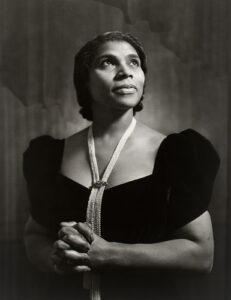Celebrating African American Artistry: ASALH’s 2024 Black History Month Theme “African Americans and the Arts”
At Sage Collective, we share a deep appreciation for the cultural traditions that have shaped African American life. So, as we step into Black History Month this year, the Association for the Study of African American Life and History (ASALH) has aptly chosen the theme “African Americans and the Arts.” This theme offers us a profound opportunity to delve into the rich tapestry of African American artistic contributions, encompassing an virtually-endless array of cultural expressions.
African American art, as highlighted by ASALH, is a vibrant fusion of African, Caribbean, and Black American experiences. This artistry is evident across various domains including visual and performing arts, literature, fashion, folklore, language, film, music, architecture, and culinary arts. Significantly, African American artists have consistently utilized their craft to preserve history, community memory, and empower themselves and others.
The journey of African American art has been shaped by various artistic and cultural movements like the New Negro, Black Arts, Black Renaissance, hip-hop, and Afrofuturism. These movements, predominantly led by people of African descent, have not only shaped popular trends globally but have also set a standard in the artistic world.
Historically, Western intellectuals often overlooked or minimized African contributions to the arts. However, the resilience and continuity of Black art production remain evident, stretching from ancient Egypt across Africa and Europe to the New World. The sweetgrass baskets made by enslaved Africans in the Lowcountry, for example, demonstrate a 300-year tradition of visual artistry through craft.

Music has been a significant avenue of expression, with the spirituals born from the suffering of bondage marking America’s first contribution to this art form. Blues musicians like Robert Johnson, McKinley ‘Muddy Waters’ Morganfield, and Riley “BB” King laid the foundation for many evolving music genres. Literature also boasts significant contributions from African Americans, with works from poets like Phillis Wheatley and novelists such as David Walker and Maria Stewart.
The 1920s and 30s saw the rise of the Black Renaissance and New Negro Movement, bringing Black Arts to an international audience. Figures such as James Reese Europe, Langston Hughes, Josephine Baker, and Lois Mailou Jones played pivotal roles in introducing Black culture and aesthetics to the world. This period recognized the contributions of Black artists in cities like Harlem, Los Angeles, Chicago, and New Orleans.
The 1960s’ Black Arts Movement continued this legacy, addressing issues like heritage pride and establishing platforms for Black artists through galleries, museum exhibitions, and publications. This era saw artists like Alvin Ailey, Judith Jamison, Amiri Baraka, Nikki Giovanni, and Sonia Sanchez come to the forefront.
In 1973, hip-hop emerged in the Bronx as a new genre of music, defined by its five foundational elements. Artists like DJ Kool Herc and Coke La Rock used technology to create a style that has since been a critical voice in political, social, and cultural discourses.

Afrofuturism, a term coined about 30 years ago, represents cultural and artistic productions that envision a future for Black people free from oppression, blending Black history with science and technology. This movement includes artists like Sun Ra, Rashan Roland Kirk, Janelle Monáe, and Jimi Hendrix, writers like Octavia Butler, and films like Marvel’s Black Panther.
ASALH’s dedication of the 2024 theme to “African Americans and the Arts” invites us to celebrate the entirety of African American history in the arts. This commemoration not only honors the past and present contributions but also anticipates the continued impact and evolution of African American artistry in the 21st century and beyond.

